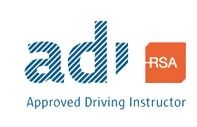Under Bonnet Checks
On the driving test the examiner may ask you the following item locations and how to carry out safety checks. You are not required to touch the items you just simply point and explain how to carry out these checks.

Brake fluid reservoir, dip stick, oil refill cap, engine coolant reservoir and windscreen washer reservoir. These maybe located differently in your car to the above so ask your instructor to point these out to you before your test.
When asked: how to check the brake fluid level.Point to the brake fluid reservoir and tell the examiner you would check that the brake fluid level is between the minimum and maximum level. |
 |
When asked: how to check the engine for oil.Point to the dipstick and tell the examiner you would remove it, clean and replace it. Remove it once more and check that the oil level is between the minimum and maximum mark and also that the car is parked on a level surface to give a true reading. |
 |
When asked: if the engine was low on oil and where you would refill it.You would point to the oil cap and explain how, you would remove it pour the oil in to the correct level and replace the cap. |
 |
When asked: how to check the coolant level (Water for engine)You would point to the coolant reservoir and tell the examiner you would check the level was between the minimum and maximum level or if there is just one mark then to that mark. |
 |
When asked: where and how to refill the water for the window washerYou would point to the window washer reservoir and explain how you would refill it until full. |
 |
When asked: how to check power steering fluidYou would point to the power steering reservoir and tell the examiner you would check the level was between the minimum and maximum level. Please note some cars may not have a power steering reservoir |
 |
When asked: how to carry out a safety check on the car tyres.When checking the tyres you should check the walls of the tyres making sure there are no cuts or bulges. The tyres depth should be worn evenly across the tyre. The tyre depth should be over the minimum amount of 1.6mm. The tyres should be inflated to the correct tyre pressure. Your tyre is what connects your car to the road so check them regularly. |
 |
The above questions won't just get you off to a good start on your test; it will also stay with you when you buy your first car. It is one of the most practical things you are taught whilst learning. By checking your car regularly and having it serviced not only will you save on fuel and parts costs but it may just save your life!
"like" us on facebook if you find the information helpfull simply click on the link below
www.facebook.com/Galwaydrivingschool







